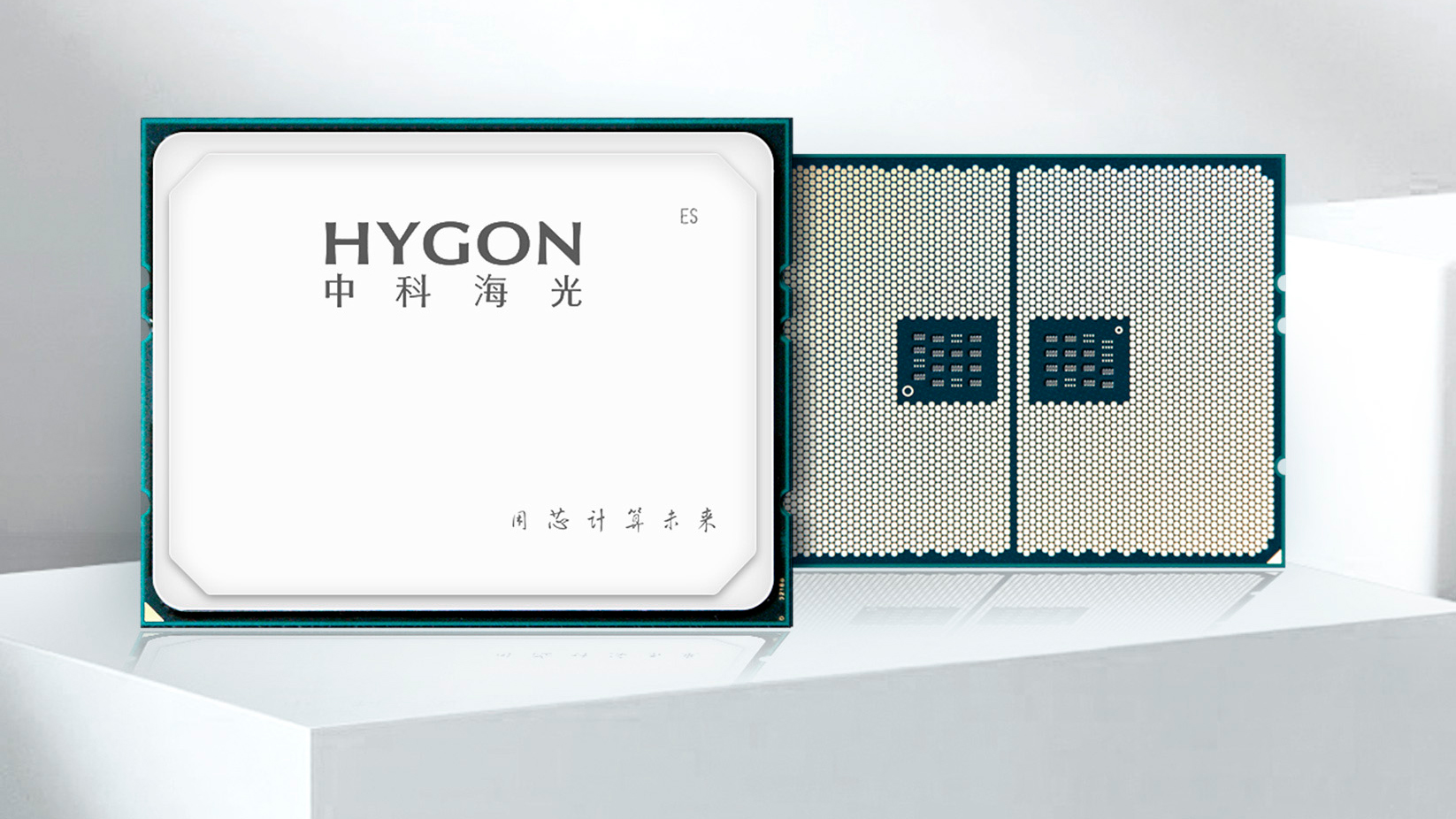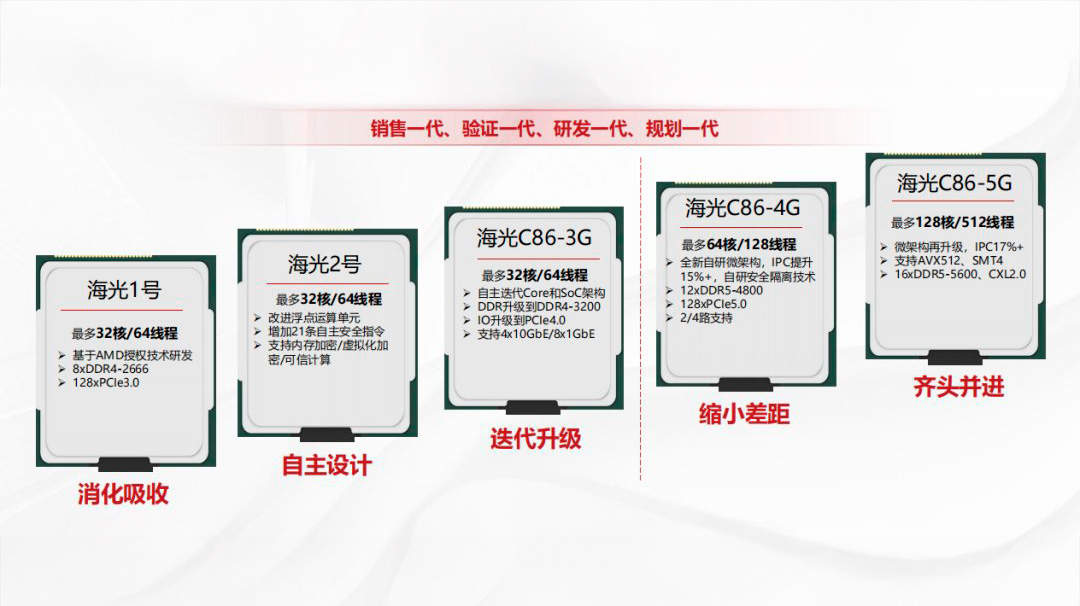Chinese chipmaker readies 128-core, 512-thread CPU with AVX-512 and 16-channel DDR5-5600 support

You won't typically find a Hygon processor among the list of best CPUs for gaming or other applications. Nevertheless, Hygon stands as one of China's most important fabless semiconductor companies. Hardware investigator HXL recently shared an ambitious roadmap detailing Hygon's forthcoming initiatives, including a flagship 128-core, 512-thread processor.
Baptized as the C86-5G, the upcoming server processor will feature up to 128 cores with simultaneous multithreading (SMT). However, there's a slight twist. Instead of utilizing the typical two-way SMT (SMT2) that we've grown accustomed to on modern mainstream and server chips, the C86-5G leverages four-way SMT (SMT4), which means four threads per core. That's why the C86-5G has 128 cores and 512 threads.
Manufacturers have long utilized various SMT layouts; Hygon is not introducing any innovative concepts. For instance, Intel's defunct Xeon Phi, particularly the Knights Landing variant, was equipped with an SMT4 architecture. Moreover, IBM's Power8 processors offer SMT4 capabilities and extend to SMT8.
Hygon C86-5G Specifications
Processor | C86-5G | C86-4G | C86-3G | 2nd Gen | 1st Gen |
|---|---|---|---|---|---|
Cores / Threads | 128 / 512 | 64 / 128 | 32 / 64 | 32 / 64 | 32 / 64 |
SMT | SMT4 | SMT2 | SMT2 | SMT2 | SMT2 |
Memory Support | 16 x DDR5-5600 | 12 x DDR5-4800 | DDR4-3200 | ? | 8 x DDR4-2666 |
Connectivity | CXL 2.0 | 128 x PCIe 5.0 | PCIe 4.0 | ? | 128 x PCIe 3.0 |
The C86-5G, in contrast to its predecessor, the C86-4G, features up to twice as many cores and four times as many threads. Unfortunately, Hygon has not disclosed the specific microarchitecture utilized in the C86-5G, only mentioning that it has been "upgraded again." Consequently, the chipmaker claims that the C86-5G will significantly improve instructions per cycle (IPC) by more than 17%.
Hygon has come a long way since its first-generation server processor, which was built on the Dhyana microarchitecture derived from AMD's Zen IP. However, it seems to be a thing of the past, as Hygon's roadmap indicates that since the C86-4G model, the company has adopted a "new self-developed microarchitecture." Consequently, the C86-5G is said to employ an enhanced version of this mysterious microarchitecture.
The C86-5G has a rich feature set, including AVX-512 instructions and 16-channel DDR5-5600 support, up from the 12-channel DDR5-4800 configuration on the C86-4G. The former can substantially help the C86-5G power through server and enterprise workloads. Meanwhile, supporting 16 memory channels will allow Hygon's upcoming platform to house an enormous amount of memory. The manufacturer didn't specify which DIMM formats the C86-5G can handle, but being a server chip, it should support RDIMMs and such. But even with conventional DDR5 memory modules that have scaled up to 64GB per module, the C86-5G can have up to 1TB of DDR5-5600 at its disposal.

The earlier C86-4G model offers 128 PCIe 5.0 lanes for connectivity, matching the capacity of AMD's fourth-generation EPYC 7004 (codenamed Genoa) chips. Although the number of PCIe 5.0 lanes for the C86-5G is yet to be disclosed, Hygon has confirmed that the new flagship will support Compute Express Link 2.0 (CXL2.0). This positions the C86-5G competitively alongside the latest AMD EPYC 9005 (codenamed Turin) and Intel's 5th Gen Xeon (codenamed Emerald Rapids) processors in terms of interconnect standards.
Get Tom's Hardware's best news and in-depth reviews, straight to your inbox.
The C86-4G has presumably been available since last year, suggesting that Hygon probably began development on the C86-5G already. However, since the roadmap is quite ambitious and lacks specific dates, we cannot determine the current status of the C86-5G.
Before the tariff conflict with the U.S., China was already pursuing technological self-sufficiency. The tariffs merely accelerated the nation's efforts to reach this goal, with companies like Hygon vital to the process. It's unrealistic to believe Hygon can launch a chip that rivals AMD's and Intel's performance levels. Nonetheless, the C86-5G seems to compare well with competitors in terms of features, at least. Considering the current landscape, we expect to see C86-5G benchmarks soon.

Zhiye Liu is a news editor, memory reviewer, and SSD tester at Tom’s Hardware. Although he loves everything that’s hardware, he has a soft spot for CPUs, GPUs, and RAM.
-
micheal_15 128 cores and it's nearly as much performance as a Pentium Pro from the early 2000s. WOoo! go china! or something.Reply -
MobileJAD I wouldnt want to build a system using a chinese processor over a cpu from AMD or Intel, but jeezus the idea of a 128 core processor with 4 threads per core is hella tempting for me, even if it only runs at 2ghz under load, id still love to find work for it do.Reply -
jeremyj_83 Isn't Hygon the company that worked with AMD in 2018 and has a license for Zen 1 uArc?Reply -
S58_is_the_goat Reply
They drove a dump truck full of money to Lisa Su's house, what could she do?!?toyotabedzrock said:It is clearly an AMD design. AMD should be questioned about this. -
Pemalite Reply
They don't allow politics remember. Unless it's what they have written.dalek1234 said:Sounds like some more fabrications coming from czayna. AVX-512 would require a license from Intel and AMD. This smells like BS commie propaganda. Shame that THG propagates that garbage.
In saying that, I am not sure they care about licensing agreements, their goal is self sufficiency, not selling overseas. -
das_stig Reply
Agree, plenty of task that CPU can do if also power efficient.MobileJAD said:I wouldnt want to build a system using a chinese processor over a cpu from AMD or Intel, but jeezus the idea of a 128 core processor with 4 threads per core is hella tempting for me, even if it only runs at 2ghz under load, id still love to find work for it do.